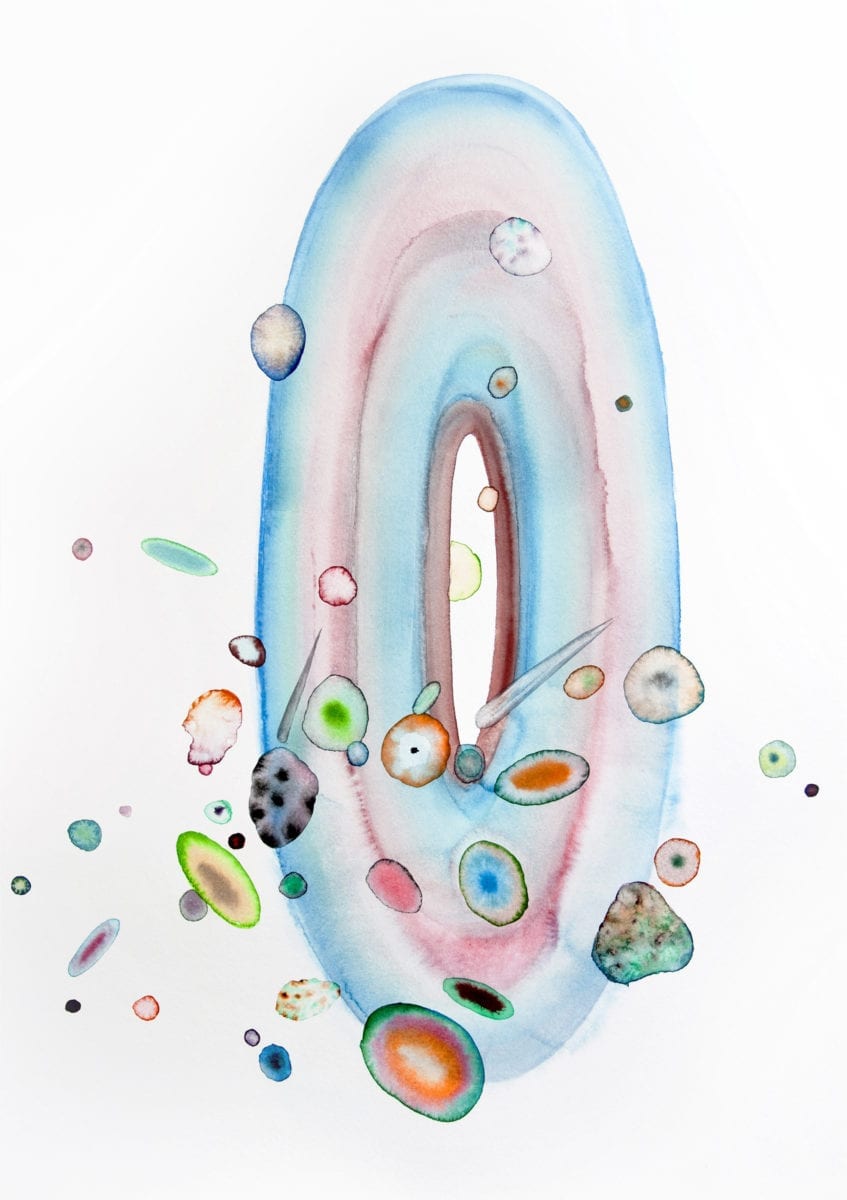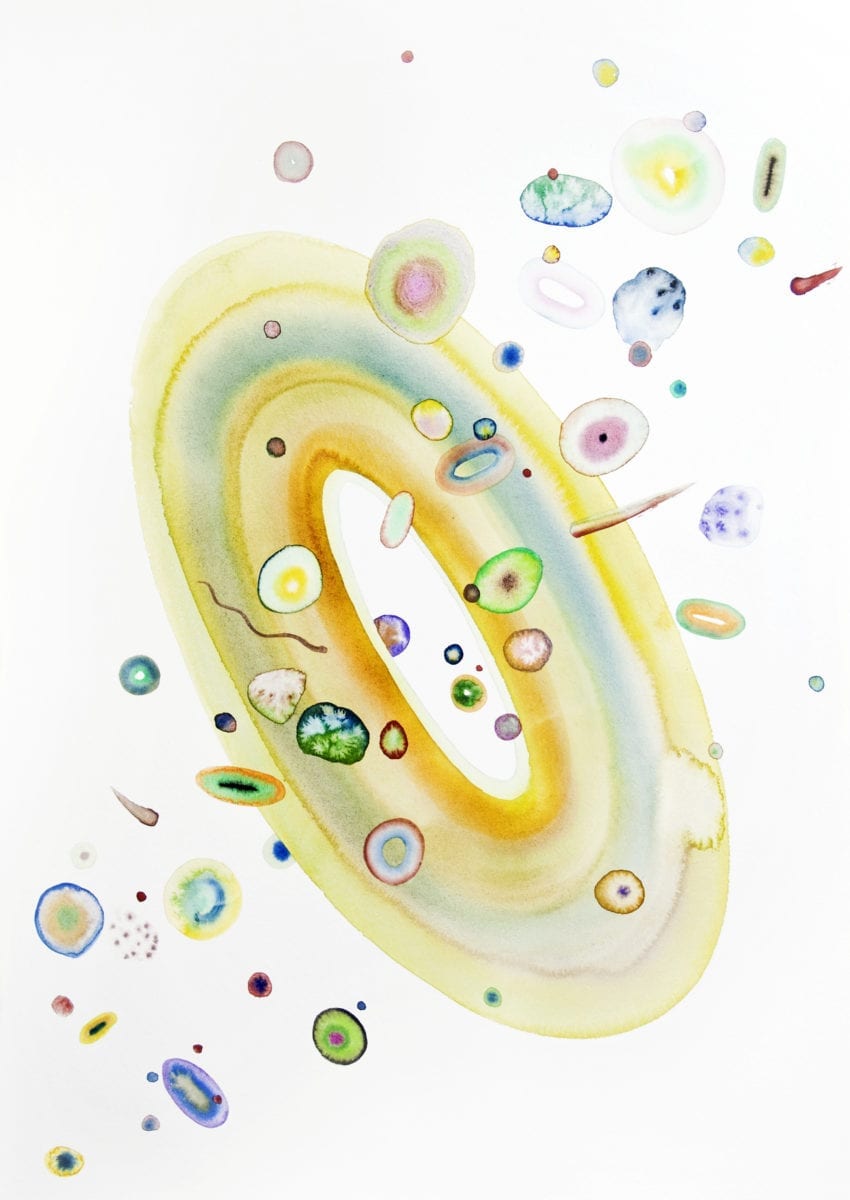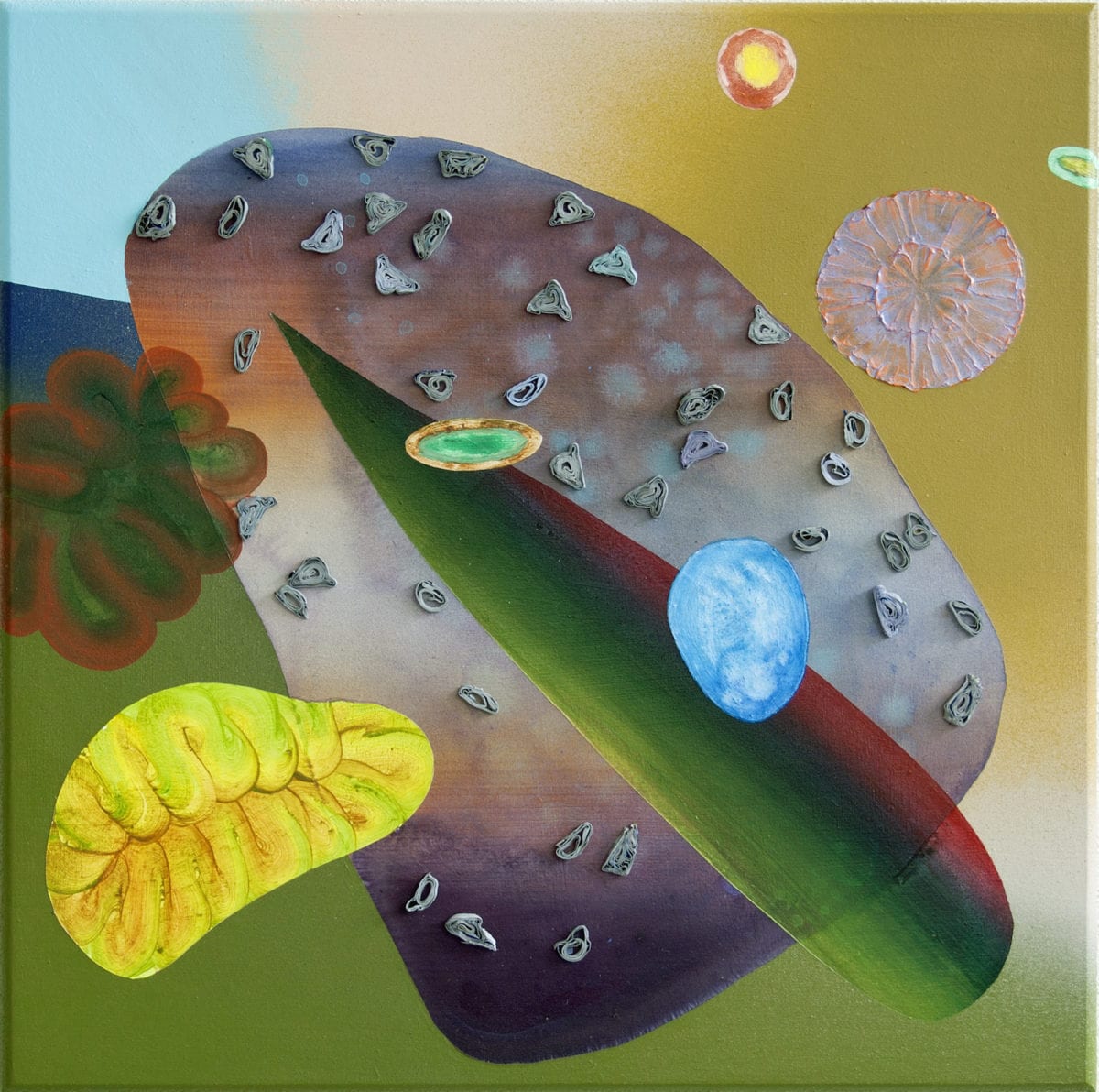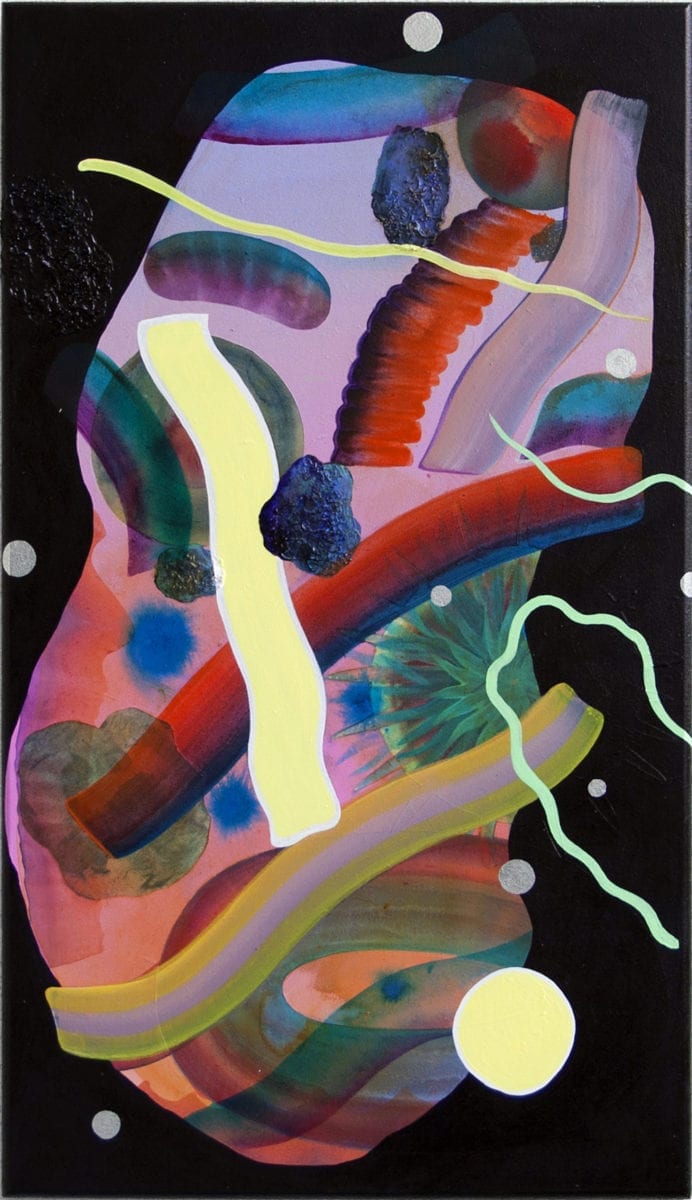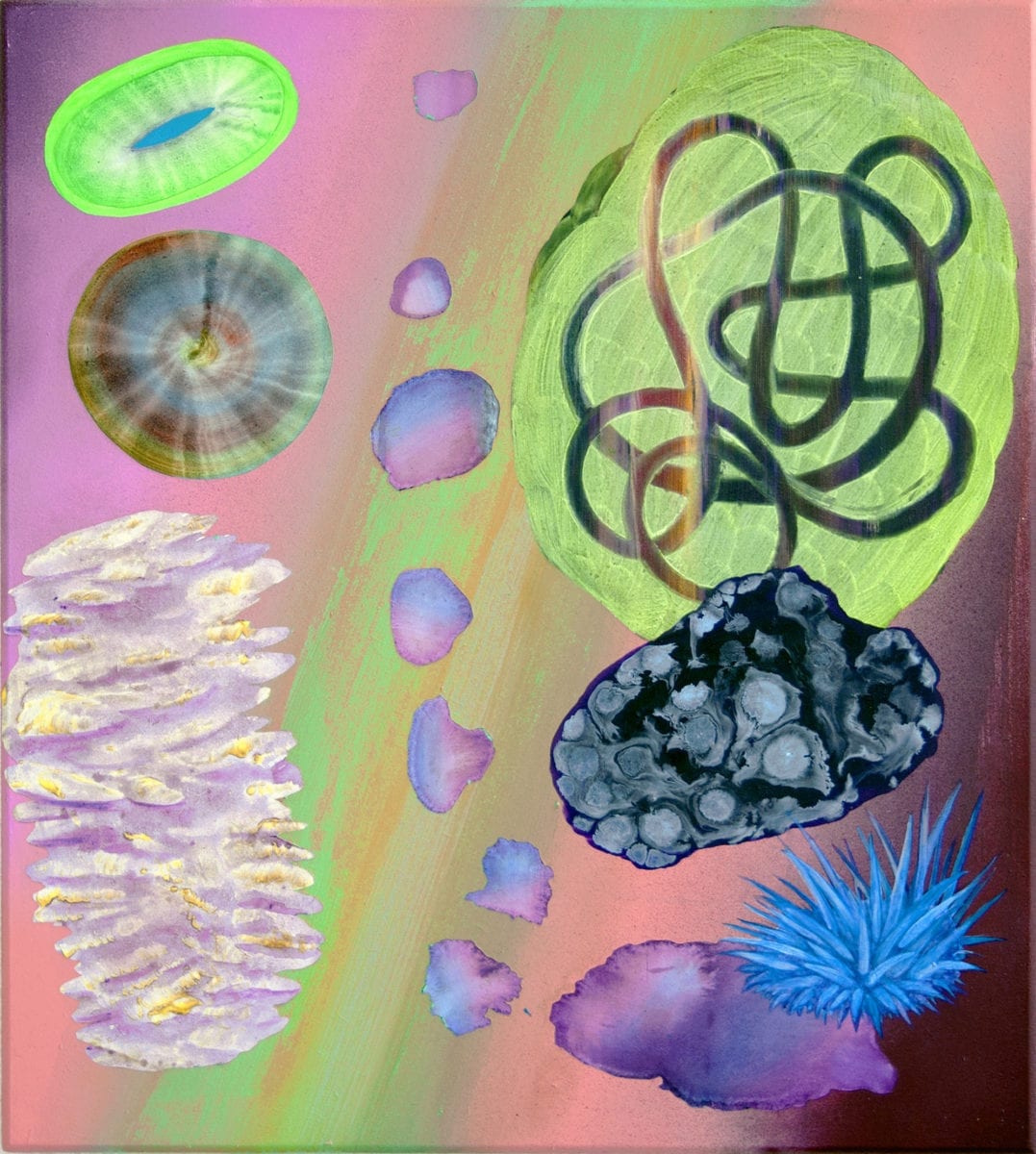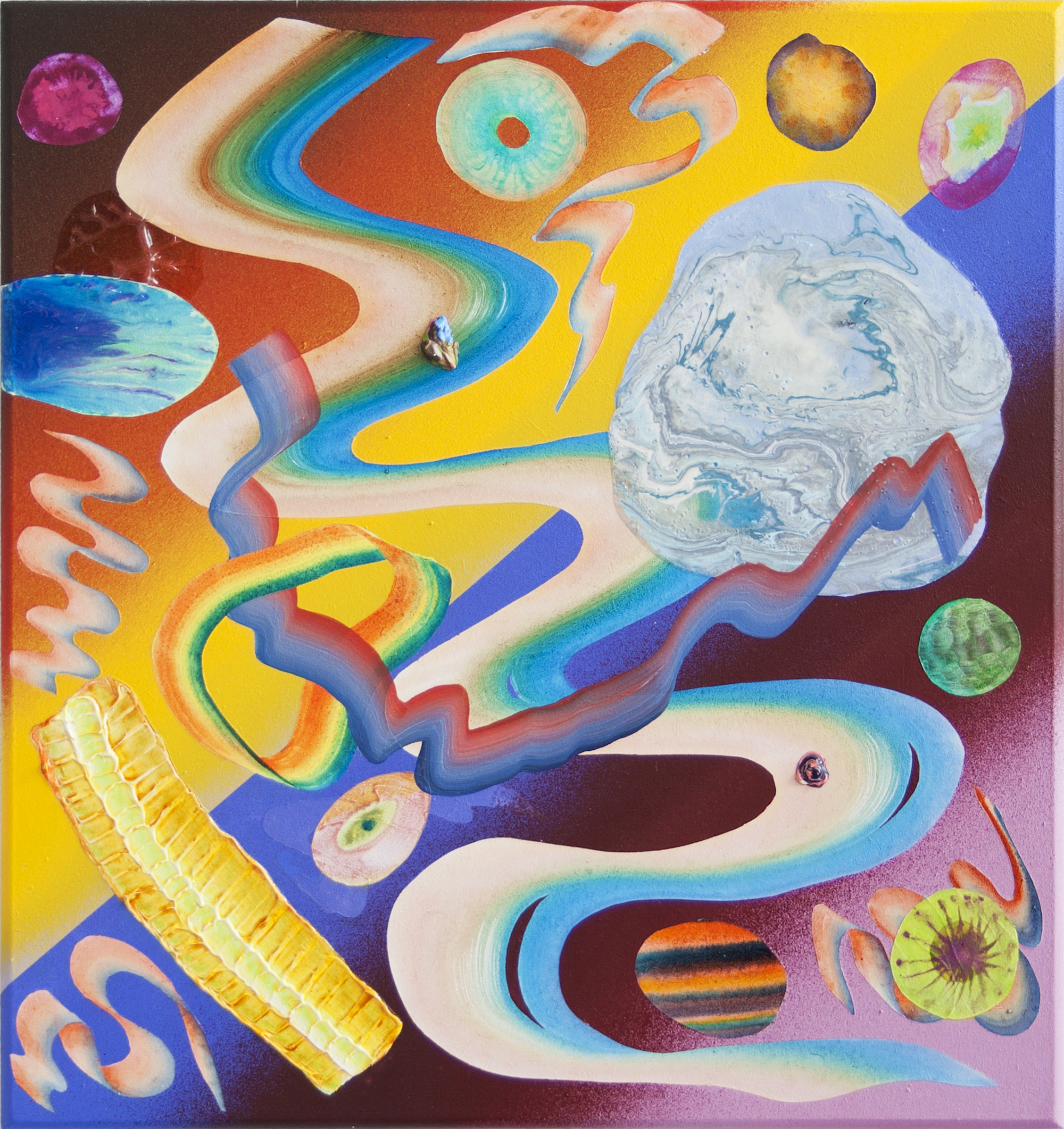
Take a deep dive into Simone Albers’s psychedelic paintings, which draw inspiration from all kinds of wacky shapes and colours found in the natural world. You’ll be as likely to spot wiggly cell structures as you are to see exploding galaxies in her recent series Heavy Meta, started in 2017. In the series, glass and watercolours come together to create illusions of transparency and depth, playing with colour, pattern and abstraction. There is also something strangely retro, or retro futuristic, about her work, like the trippy scenes at the end of Stanley Kubrick‘s 2001: A Space Odyssey brought to life.
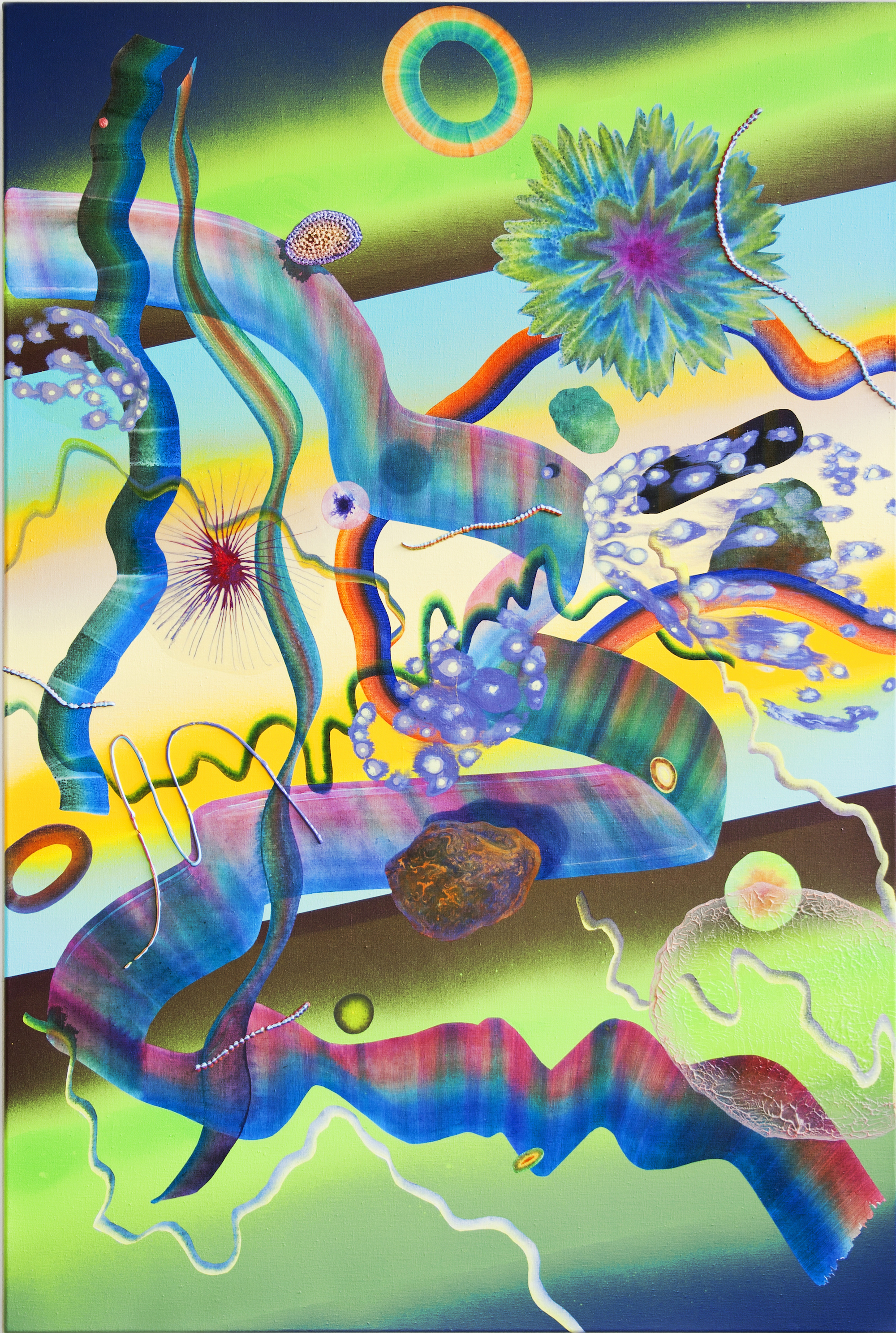
Nature is a recurring theme in your work. Let’s zoom in on this a bit; which aspects or motifs from the natural world excite and interest you in particular?
First of all, I’m endlessly fascinated by the absurdity of existence. Why is there “something” instead of “nothing”? It is incredibly weird and beautiful that in billions of years matter could organise itself into atoms, molecules, galaxies, planets and even life. There are so many facets and stories here that are worth examining. One of the interesting aspects is that there are certain rules, systems and patterns underlying the direct visible world that also occur on different levels: patterns that you can even experience while painting. The analogy between painting and the creation and evolution of natural entities I find super interesting.
- Heavy Meta VII and Heavy Meta VIII
“I’m endlessly fascinated by the absurdity of existence”
What have been some of the rewards and challenges of working with such a broad and endlessly inventive subject matter?
You never run out of inspiration! It is such a complex and difficult matter that there is always something new to discuss and explore. At the same time it is also quite simple: almost everyone can relate to it. I think because we come from nature ourselves we can easily access those subjects. Maybe not always on the deepest levels, but natural beauty attracts and seduces people. The challenge for me is finding a balance between aesthetic and conceptual elements. I want to show more than a pretty picture, but want it to look appealing. I do want to talk about nature, natural science and our relation to nature, but I don’t want to become a moralist or a teacher.
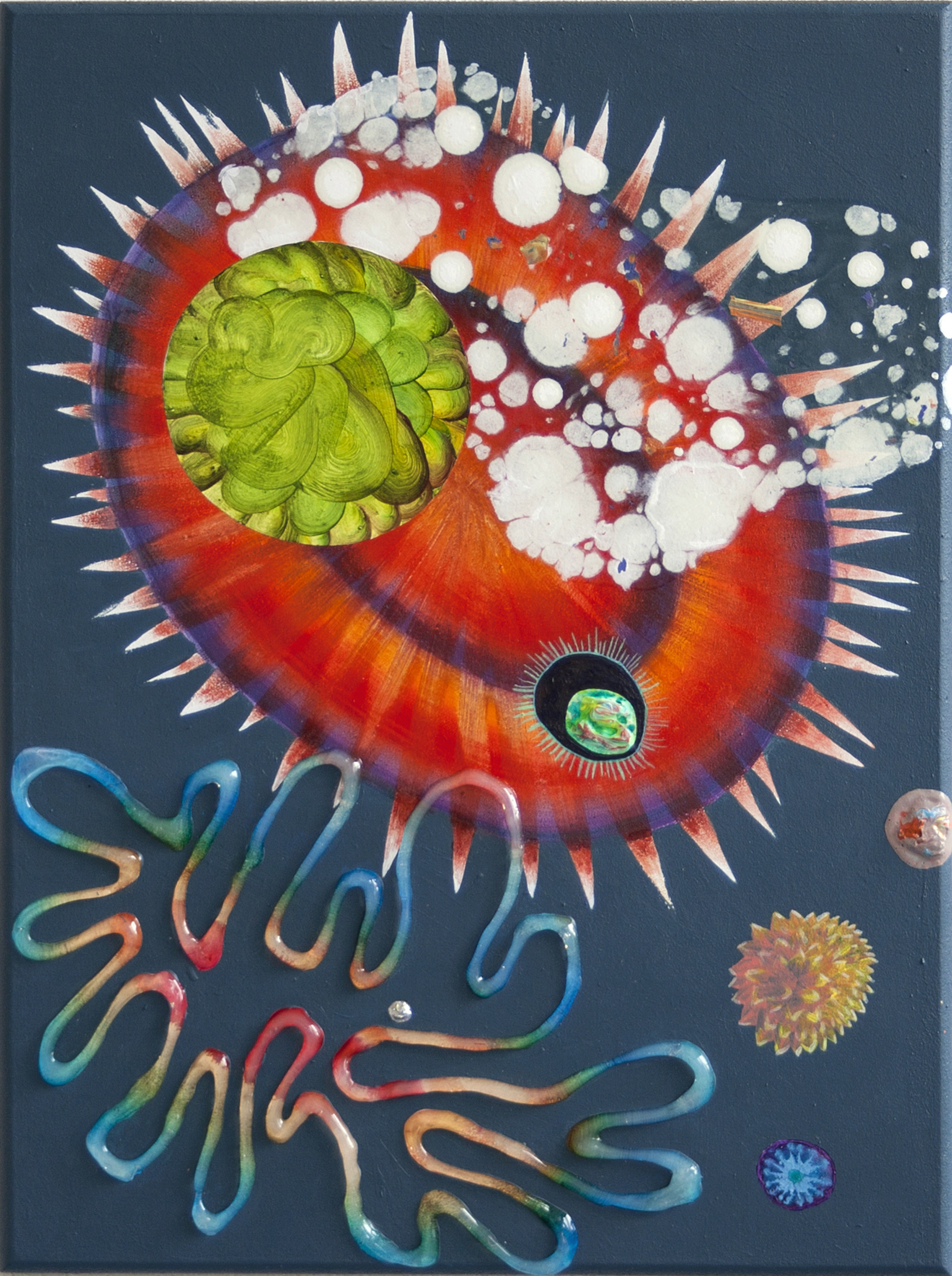
Colour is central to your work, which you use to almost psychedelic effect. How important is this legacy to you, as well as the emotional power of colour itself?
I don’t really make a study out of it, to be honest. Colour is really important for me but, in a sense, it is for every visual artist. For me, colour is a tool to tell and/or show something. I use it to attract my audience. It’s psychedelic and aesthetic, but I’m not sure if it’s emotional (at least in my work). What I do find interesting is the (spiritual or philosophical) meaning of colours given by artists, especially in abstract painting. For example, in the works of Piet Mondriaan and Hilma af Klint.

“I want to show more than a pretty picture, but want it to look appealing”
The patterns that occur in nature endlessly repeat, whether on a micro or macro scale. How do you seek to play with scale and size in your work, and with our ideas of perception?
I like to play with size. In earlier works I’ve often worked with either super big or super small paintings, depending on how I wanted my audience to perceive the work (and therefore their own position). Do we feel big, or very small? The last one I find most interesting, with the Romantic element of placing the small human amidst big nature. I also wonder, can you look at really small pictures and at the same time feel really small?
In my latest series, I experimented with scale and size in another way. Not by playing with the size of the paintings, but with the size of the elements on it. By going abstract I could create objects that were free from scale. They interchange between microscopically small and incredibly big—as well as between matter and energy, physical and metaphysical.
Transparency and layering are essential parts of your pieces. The illusion of depth that they create within a flat surface reminds me of the experience we have when we look at a digital screen, whether on our phones or laptops. What has been the influence of the internet and digital world on your work?
The internet has been an influence. It helps me a lot that such a big part of the world can be found online. I have a huge database with pictures that were collected on the internet. It literally has broadened my horizon. Photoshop is also an influence, I used to do a lot of digital sketching before painting in real life. I like the computer look: flashy and possibly also a bit eighties.
